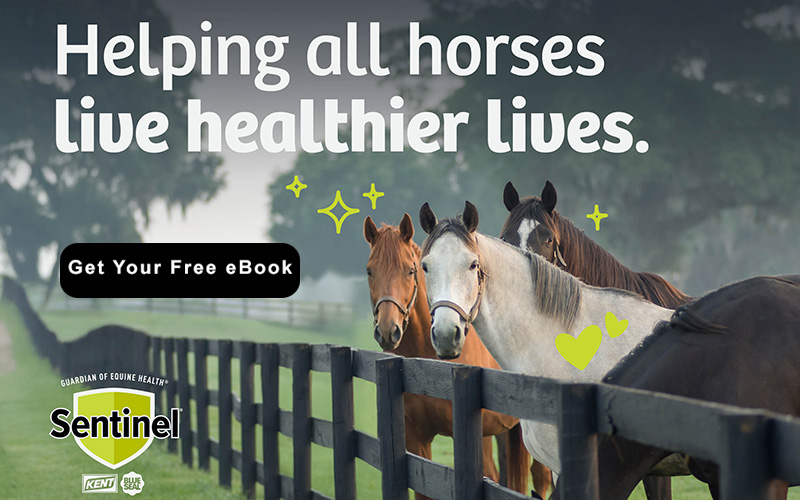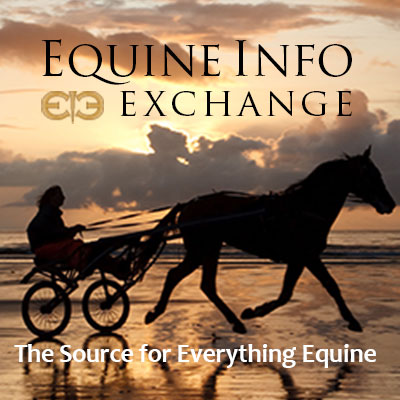Health & Education
We all want the best care possible for our horses. The Heath & Education section covers both Learning Institutions, Organizations as well as many sources for equine assistance including Veterinarians and Farriers.
For those who want a to formally study horses, the Education section includes College Riding, Equine Studies, and Veterinary Schools. Learn about the wide variety of horses in the Horse Breeds section. Supplements and Treatments Therapy are also included in the section.
Everyone can learn from Fine Art and there are some specialty Museums that might surprise you.
Horses as a therapy partner enrich the lives of the disabled. These facilities are listed in our Therapeutic Riding section. To help children and young adults build confidence and grow emotionally, please see the resources available on the Youth Outreach page.
Looking for a place to keep your horse? You can find it in the Horse Boarding section. Traveling? Find a Shipping company or Horse Sitting service if your horse is staying home!
Want to stay up to date with the latest training clinics or professional conferences? Take a look at our Calendar of Events for Health & Education for the dates and locations of upcoming events.
Do we need to add more? Please use the useful feedback link and let us know!
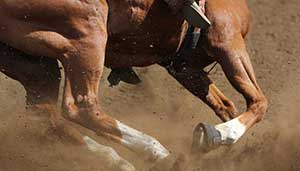
by Dr. Eleanor Kellon
Tendons and ligaments play critical roles in the musculoskeletal system. Feed them well and treat them kindly.
Tendons and ligaments are specialized forms of connective tissue. Tendons connect muscle to bone. Ligaments are anchored on bone at both ends. Both are composed of interwoven strands of type I collagen protein in a structure much like a rope. They are built to resist stretch, but both structures do stretch.
Tendons facilitate movement by pulling on bones when a muscle contracts. Stretching that occurs (e.g. when the fetlock drops during weight bearing) has an effect similar to pulling on a rubber band. When the stretch is released, the tendon snaps back to its original length, and this assists the pull of the muscle.
Ligaments are meant to restrict movement. They are able to dissipate their stress because they contain strands of elastin, a protein which can deform then resume its original shape.
Overstretching can damage any tendon or ligament. Fatigue and working in deep footing are further risk factors, as are toe grabs or overly long toes and shoes with bars or heel extensions that delay breakover. Age and PPID (Cushing's disease) also weaken these structures.
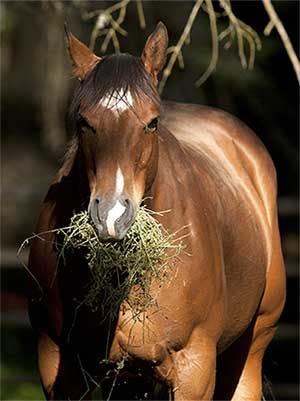
by Juliet M. Getty, Ph.D.
Do you feed your horse flaxseeds? You likely do. Good job! Flaxseeds are a wonderful source of fat, quality protein, water-soluble fiber, and have amazing health benefits. Read on and get all the facts about this excellent whole food.
Flaxseeds are high in fat
The type of fat is what makes them so special. What differentiates flaxseeds from other high fat foods is its fatty acid profile. Most of the fat in flaxseeds is in the form of two polyunsaturated fatty acids -- linoleic acid (LA) and alpha-linolenic acid (ALA). Your horse requires them to be healthy. But his body is not capable of producing them. (The same is true for you!) So, it is up to you to add them to his diet. Consequently, by definition, LA and ALA are referred to as essential fatty acids (EFAs).
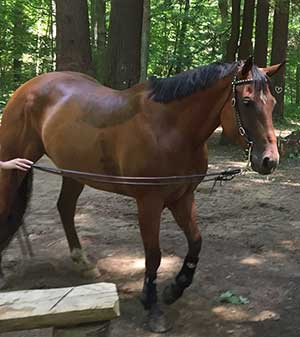
by Marcella Gruchalak
Horse shopping is stressful, especially when you don’t bring home the horse you thought you bought.
Horse shopping is an extremely stressful and overwhelming situation. Looking for a horse that’s the perfect fit takes time and plenty of searching. You browse multiple search engines such as Facebook, Google and Craigslist, scanning hundreds of ads daily. Finally, you narrow it down to which horses you’d like to visit. The horses you’ve picked out have a description meeting your qualifications and their videos show healthy, sound moving, sane minded animals.
Regardless of the well written ad, high quality videos and pleasant phone conversation with the current owner, once you’re on site ready to meet and ride the horse, there can be multiple red flags that indicate this horse isn’t what’s advertised.
1. Upon arrival the horse is sweaty. If the horse you’re going to see is sweaty, especially in the area where the saddle sits, this is a good indicator that the horse has been worked before you arrived. The horse may be high energy and the owner may have worked her beforehand to guarantee you a more pleasant ride.
This situation may be the most difficult to bridle (pun intended). Two ways to grapple with this circumstance are to be frank and ask why the horse has sweat marks or to arrive early to prevent it from happening.
Read more: 5 Red Flags You Should Not Ignore When Horse Shopping (And How to Address Them)
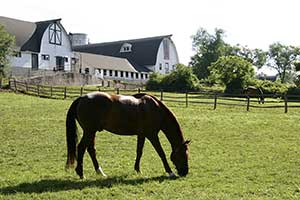
by Juliet M. Getty, Ph.D.
We know they’re out there. Horses who are enjoying life. Horses who are brimming with health – strong muscles, shiny coats, hard hooves, good digestion, normal metabolism, strong immune function – just plain healthy! How does this happen? What is it about their care and feeding that gives them such wellbeing?
We’re always searching for answers. Our typical approach is to study sick horses. But that only helps us to understand disease. We look at fat horses to understand fat horses.
We look at horses with pain, metabolic problems, and digestive ailments to understand those who are experiencing the same hardships. While such research is worthwhile, wouldn’t it also make sense to evaluate fit, hearty horses so we can strive to make our own horses be more like them? Shouldn’t we be looking at what healthy horses experience?
Here’s the basic “recipe” for a healthy horse:
Avoid feeding excess calories. Obesity is a real problem and it comes from piling on the calories, combined with lack of physical activity. Forage should be the dietary staple and it should flow steadily throughout the horse’s entire gastrointestinal tract. Pounds and pounds of concentrated feeds can shorten a horse’s life.
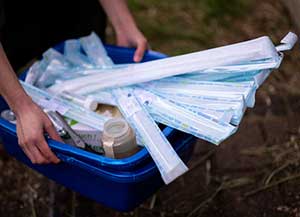
by Jen Roytz
Biosecurity should be a year-round concern for any farm, equine competition venue or other location in which horses are kept, but recent outbreaks of communicable diseases around the world have horsemen on heightened alert.
More recently, an outbreak of equine influenza in an active training yard prompted the cancellation of racing at tracks throughout Britain. More locally, nine horses have now been confirmed positive for equine influenza after being stabled at the World Equestrian Center, an equestrian competition venue in Columbus, Ohio. Several other horses who had recently competed at the facility were diagnosed with the virus once they returned to their home base in Indiana.
Read more: Horse Health: Equine Influenza and How to Minimize Your Risk
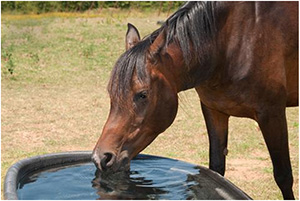
Dr. Amy Gill, PhD Equine Nutritionist
Hot, dry weather is on the rise across the country and will continue throughout the summer months. This type of environment poses challenges for horse owners in keeping their horses healthy and comfortable. Keeping horses hydrated and cool are of paramount importance during hot, dry weather.
Water is needed by the horse for body fluid balance, digestive function and thermoregulation. Lack of water is more rapidly fatal than lack of feed. Therefore, utmost attention should be paid to water quality and availability particularly when the ambient temperature remains high for long periods of time. Here are tips and suggestions for making sure your horse stays hydrated:
• Be sure to aggressively treat any horse with diarrhea and do not leave a sick horse out in direct sunlight.
• Be sure the water available is cool, preferably in the shade or under shelter. Water out in direct sunlight will become hot very quickly and be intolerable to the horse; change the water several times daily if it is heating up. Keep an eye on herd dynamics around a water source to make sure everyone is getting a drink. If the water trough is being dominated by one horse, be sure to make additional water sources available.
• Feed free choice forage (hay, hay cubes or pelleted forages) to encourage drinking. Water intake is directly related to how much dry matter is consumed. Eating forage triggers the thirst response because it absorbs water from the intestinal tract.
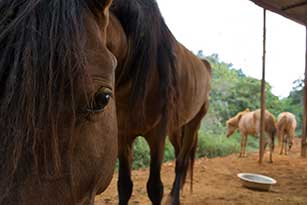
Eleanor M. Kellon, VMD
Everyone has heard about the ketogenic diet by now, or "keto" for short. It is basically a reinvention of the Atkins diet with more emphasis on eating fat. Fasting, starvation, and no or low, simple carbohydrate diets trigger a higher rate of fat oxidation to spare glucose. In omnivores and dogs, a by-product of fat oxidation is the production of ketones — hence the name.
The best diet for EMS horses is similar to ketogenic in that simple carbohydrate intake is very low. However, carb and fat calories are replaced by fiber calories. That very basic fact of equine nutrition and physiology is ignored by a proposal to treat EMS with a ketogenic diet.

Even mild dehydration can have an effect on performance. Once you know the basics, it's not that difficult to supplement electrolytes correctly, but many people don't know how - and the consequences may be taking more of a toll than is realized.
Electrolytes are minerals that exist in the body in their free, ionized form - i.e. carrying an electrical charge. Cations like calcium, potassium and sodium have positive charges. Anions like chloride, bicarbonate and sulfate are negative.
Movement of electrolytes makes excitatory activity possible, such as muscles contracting, nerves firing and the heart beating. Electrolyte concentrations and gradients also allow the body to hold normal amounts of water (hydration) and the kidneys to adjust the concentration of urine.
Sweat is a major avenue of loss for sodium, potassium, chloride and to a lesser extent calcium and magnesium, but it's not the only avenue.
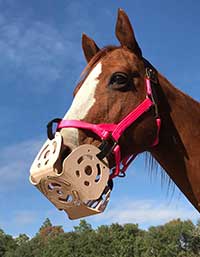
by: Joyce Harman, DVM
Muzzles are often accused of damaging the horse’s front teeth. This can be true, but it's important to put it in the correct context. A grazing muzzle prevents a horse from overeating grass, which can save her life, or at least save the horse a bad case of laminitis and the owner thousands of dollars in veterinarian bills. However, as with everything in life, a bit of knowledge and common sense will make wearing a muzzle much less damaging. Horses that crib or run their teeth on bars in the stall often wear their teeth much more than what occurs with a muzzle, yet muzzles get the blame for tooth damage.
- 12 Stretches to Release Lower Back and Hip Pain In Riders
- Horse Health: You Can Lead a Horse to Water…
- Is it Time to Change Bits?
- Maintain Your Horse’s Safety This Fourth of July
- Health and Exercise Science student research quantifies horse gait, movement for equine therapy
- 10 Facts About Equine West Nile Virus
- Tracking Five Millennia of Horse Management with Extensive Ancient Genome Time Series (Part 4 of 4)
- Tracking Five Millennia of Horse Management with Extensive Ancient Genome Time Series (Part 3 of 4)
- With Wet Weather Comes A New Hoof Problem: Retracted Soles
- Tracking Five Millennia of Horse Management with Extensive Ancient Genome Time Series (Part 2 of 4)
- Tracking Five Millennia of Horse Management with Extensive Ancient Genome Time Series (Part 1 of 4)
- Breeding: Make Sure You Cover the Basics!
- Vitamin C – Friend or Foe?
- Disaster Preparation Tips for Horse Owners
- Mild Equine Asthma Can Distinguish Winners from Losers on the Racetrack
- The Academic Equestrian: 10 Horse Personality Types
- Equine Temperament: Nature, Nurture or Both?
- Incorporating Mindfulness: Game Changer for Horse & Rider
- The Influence of Rider:Horse Bodyweight Ratio
- Debbie Roberts Loucks: The Big Power of Small Changes






